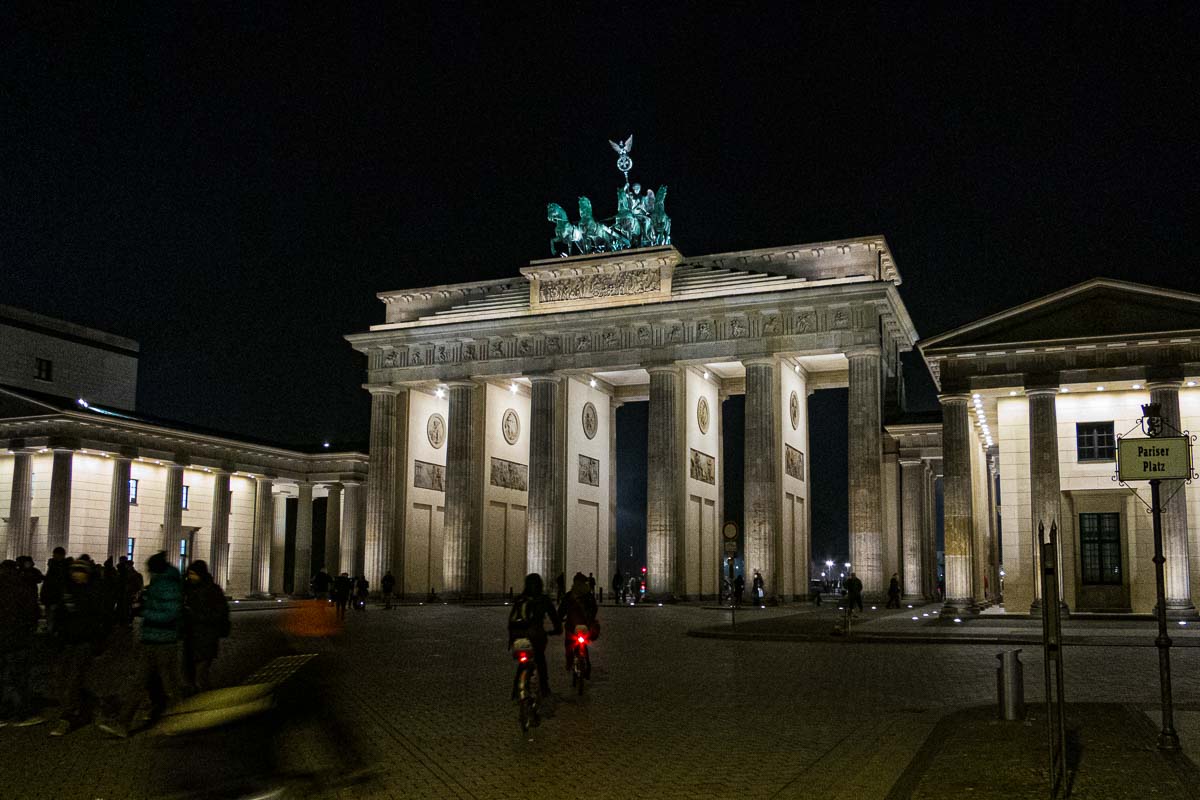
[Note: This post was updated in January 2021. It’s based on previous posts covering two different visits to Berlin, in 2013 and 2017.]
Table of Contents
Some suggestions for your Berlin itinerary
As it often happens when we announce we’re headed to a city, friends chime in with sightseeing suggestions or, even better, the names and contact info for their friends in the area. In Berlin, we met friends and friends-of-friends, and our visit was all the better for it: we took their advice!
After two visits to Berlin, we can now pass along our tips for things to do and see in this extraordinary city in Germany's northeastern state of Brandenburg. Our Berlin experiences included seeing top historic sites like the Berlin Wall and the Brandenburg Gate, visiting galleries and museums, taking a guided tour concerning the Berlin art scene, walking through many neighborhoods, using Berlin’s impressive mass transit systems, traveling for a day trip to Potsdam, and sampling a good number of bars, restaurants and hotels.
Thanks to those friends who pointed us in the right direction and to Berlin for being easy to navigate on one’s own. (We highly recommend the Berlin Welcome Card which includes all Berlin public transportation for free, plus a discount at many museums.)
Here's our curated tour of Berlin. It includes some of the “must see” places to visit as well as some quirkier interesting sites. And, of course, one of the best things to do in Berlin makes very few lists: walk the city’s neighborhoods.
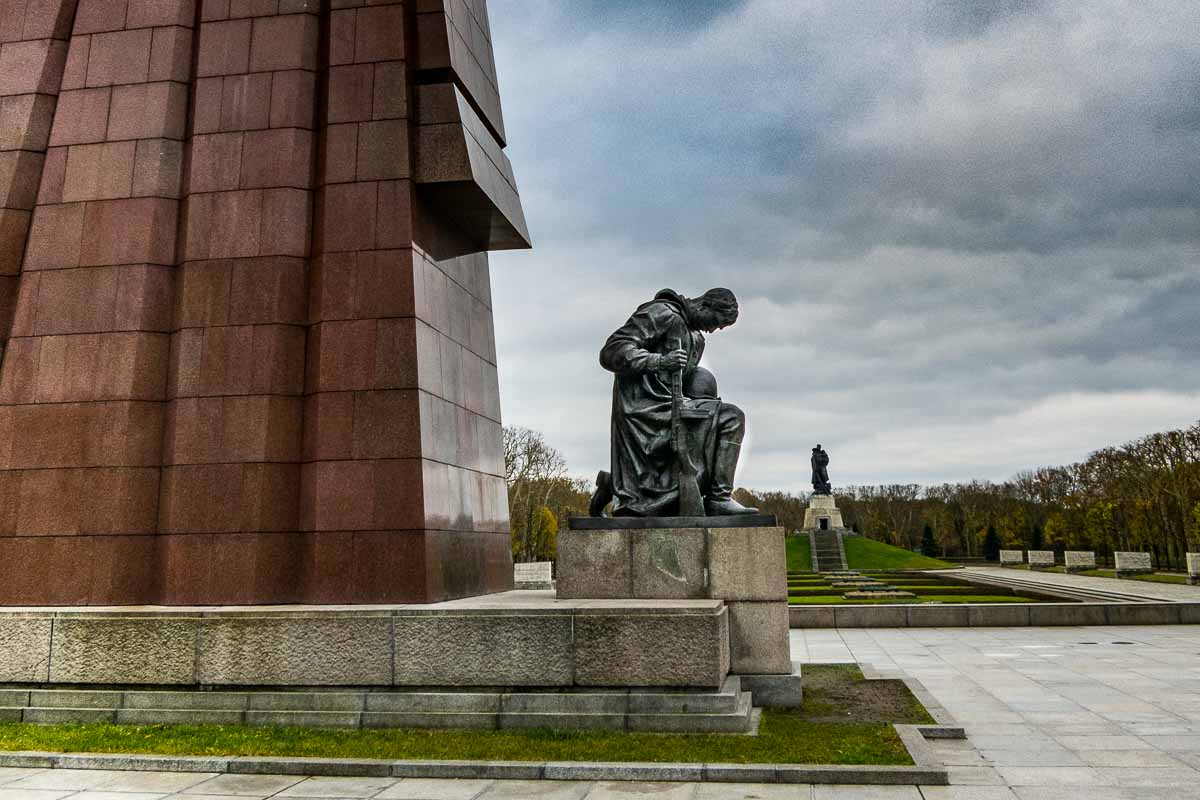
Treptower Park Soviet World War II Memorial
Treptower Park in the former East Berlin is monumental in the extreme, soviet in design, huge, looming, and moving. It is to Russians what Normandy is to North Americans. The absence of individual graves is significant; the entire area is both a memorial and a cemetery where about a third of the 22,000 Russian soldiers who died in the Battle of Berlin are buried. But no burial sites are marked as such. At the entrance, a statue of a grieving mother is one of the only intimate touches. Midway through the immense grounds, an enormous pair of sculptures are tilted toward the center, like flags bowed over bookend soldiers bent down on one knee.
From this point to the huge statue at the far end of the grounds are twin rows of sarcophagi-shaped sculptures, each with a relief carving and a quote by Stalin exclaiming the virtues of the Russian people. The giant stature at the end, perched on a high mound, is strong enough to be the culmination of the site, but not so artistic as to detract from the overall effect. The sheer size of the memorial is the message; about half of the 40 million Allied casualties in World War II were soldiers and civilians of the Soviet Union. Read more about Soviet War Memorial at Treptower Park here.
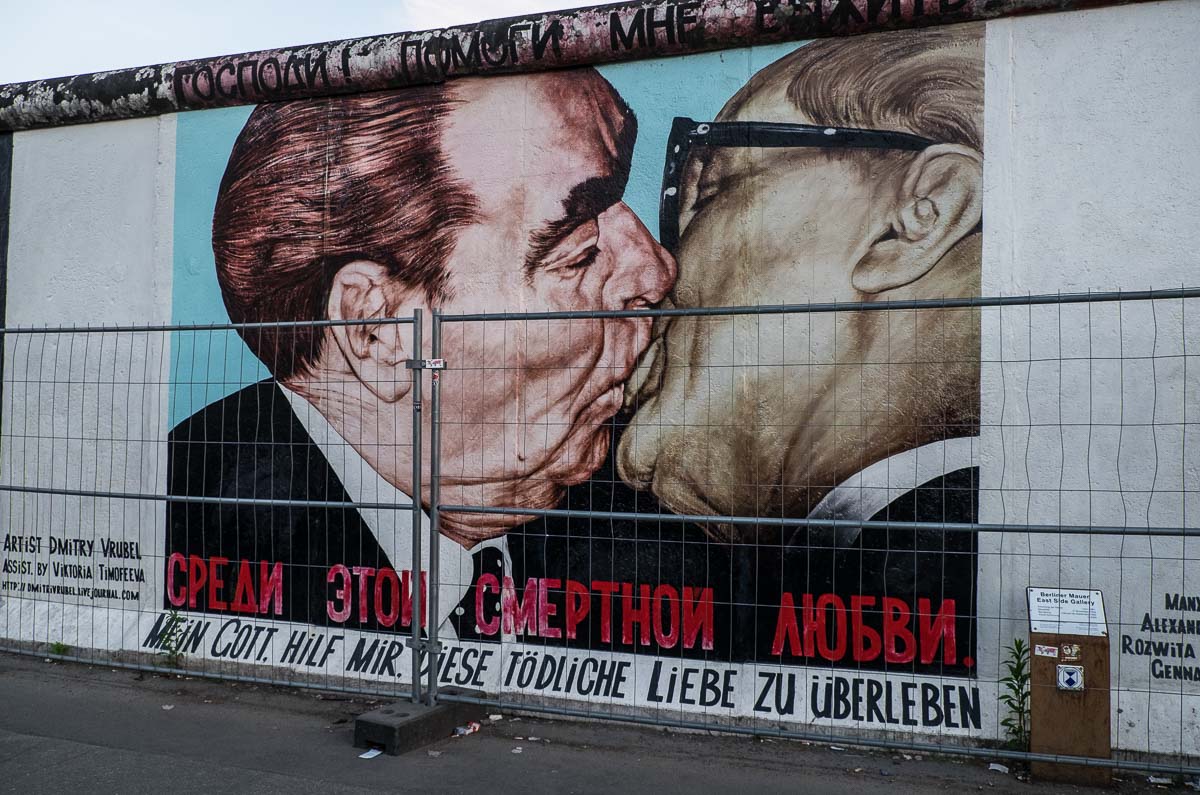
East Side Gallery
While the Soviet Memorial is not on the usual tourist routes, the East Side Gallery is. This is the open air gallery of images painted on the east side of a remaining section of the former Berlin Wall. Painting began almost immediately when the wall came down. The 1.3 kilometer section (about .8 mile) is now a protected area offering equal parts history and art. In the cold we walked and walked, into the wind, and found old and new images, retouched, defaced, painted over, and some even without graffiti. There is no trip to Berlin without imagining the wall, and this is the place to do it.
Nearby are plenty of places to relax and enjoy views along the Spree River and bridges.
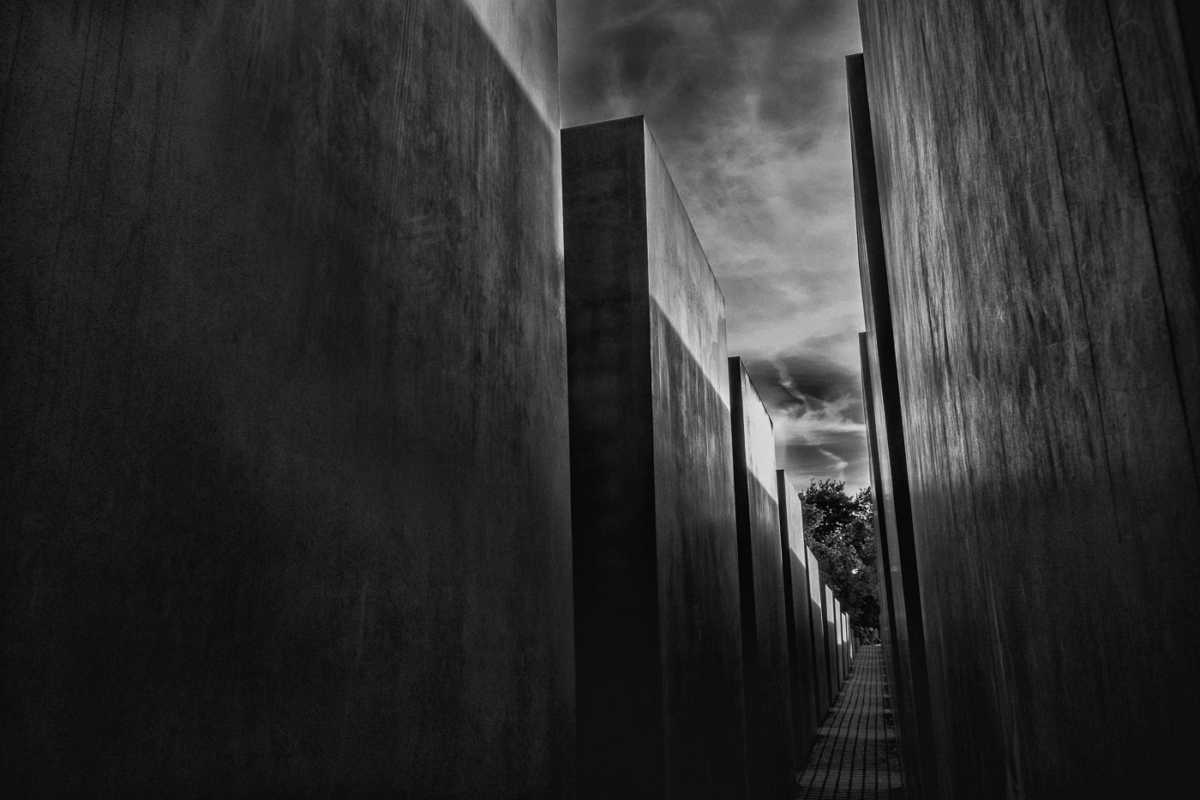
The Holocaust Memorial
The Memorial to the Murdered Jews of Europe is the official name in English. It's a beautifully somber sculpture of over 1300 concrete stelae set into an undulating ground of spaced granite pavers set intentionally to make your walking slightly precarious. And as you move further into the two-block square memorial, the ground falls away and the stelae become taller, and you get a sense of being lost and surrounded. The best time to visit is near sunset, when the play of light and shadow is most dramatic. It puts you in the dark below, yet you can see the light above–just out of reach.
The Holocaust Memorial was designed by American architect Peter Eisenman. It sits on the former site of the gardens of the Reichs Chancellory, the headquarters of Hitler's government. Today, it's in a neighborhood of apartment buildings, though it still seems utterly isolated. In all, it's a well conceived memorial showing courage on the part of the Germans to acknowledge their history.
You can see more photos and get more info on the Berlin Holocaust Memorial.
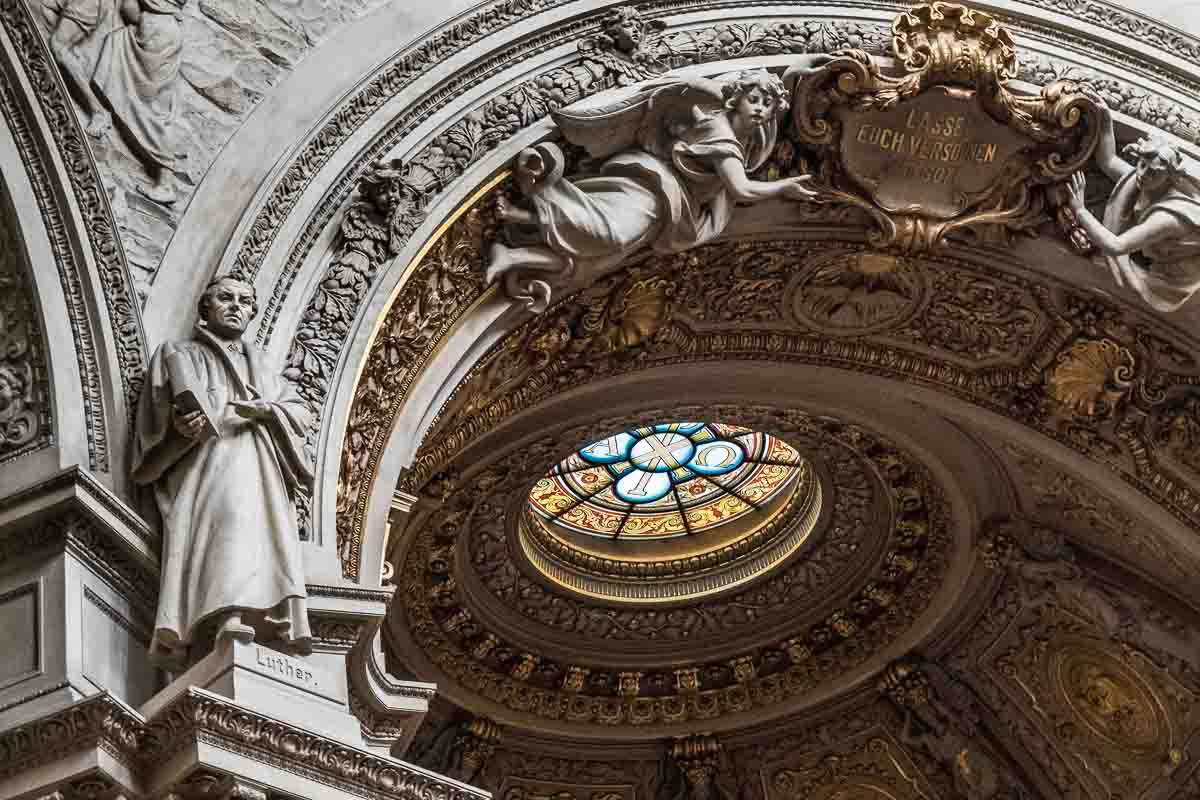
The Berlin Cathedral
The Berlin Cathedral has a long history starting as a Roman Catholic place of worship in the 15th century. But perhaps the most interesting history is more modern. A greatly enlarged church was established on the site in the early 20th Century, acting as a Protestant artistic counterpoint to Rome's Saint Peter's Basilica. This church suffered extensive damage in World War II, but, because it was in the Soviet sector of East Berlin, it was not restored for a long time. It was only about 30 years after the end of the war that the East Germans/Soviets allowed the reconstruction because it was being paid for with West German hard currency. If you're a connoisseur of churches, you'll like the neo-classic style the current church exhibits.
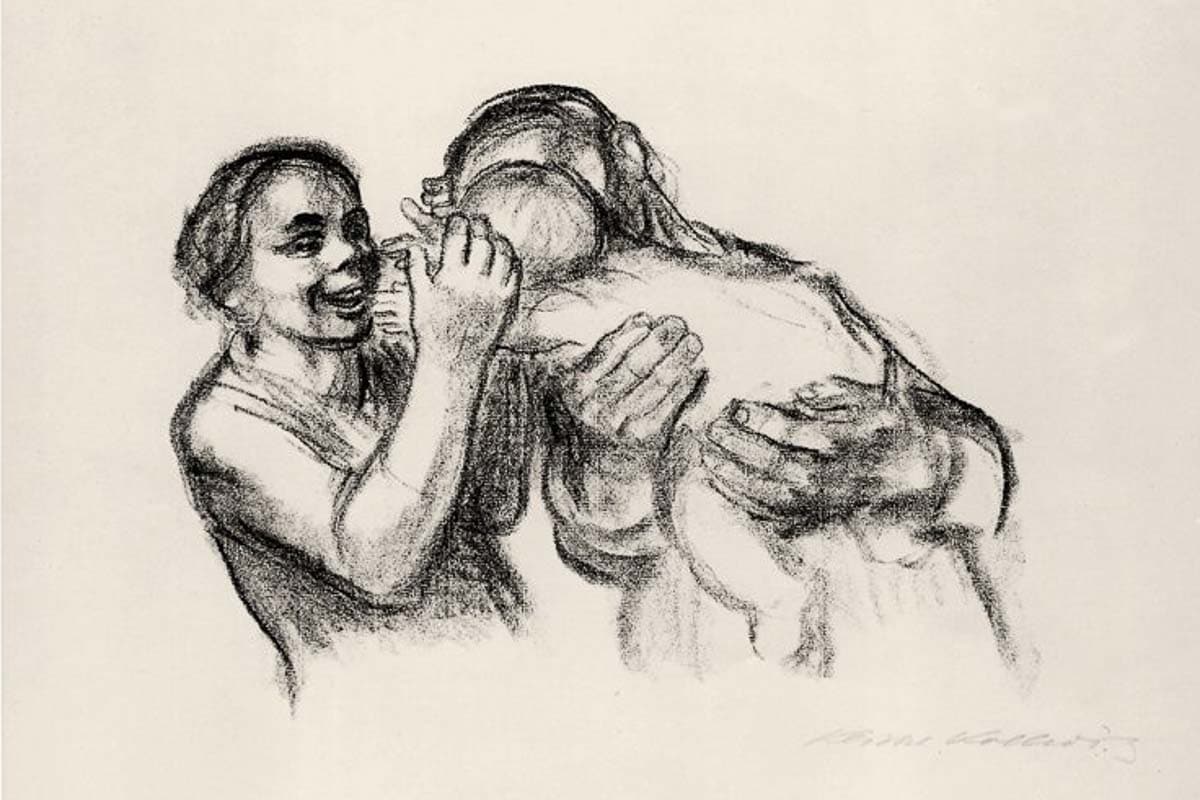
Käthe Kollwitz Museum and Fasanenstrasse
One recommendation we took to heart (from the helpful staff at Kempinski Bristol Hotel) was a visit to the Käthe Kollwitz Museum. After seeing Kollwitz's work, I was chagrined at never having heard of her before. In drawings, etchings, woodblocks, and sculpture, Kollwitz expresses the keen emotions of private lives impacted by war. Her drawing style recalls Goya, and her expressive sculptures deserve a place next to any of the greats of her time.
The Kollwitz Gallery is on Fasanenstrasse, which intersects Ku'damm at the Kempinski Hotel (see below). Many other galleries line the street, exhibiting photos, paintings, glass, classic and contemporary art. The Literatur Haus with cafe is next door, across a calm green space from the Kollwitz Museum, and several restaurants on the street are inviting. We enjoyed a light dinner at Elephant Thai.
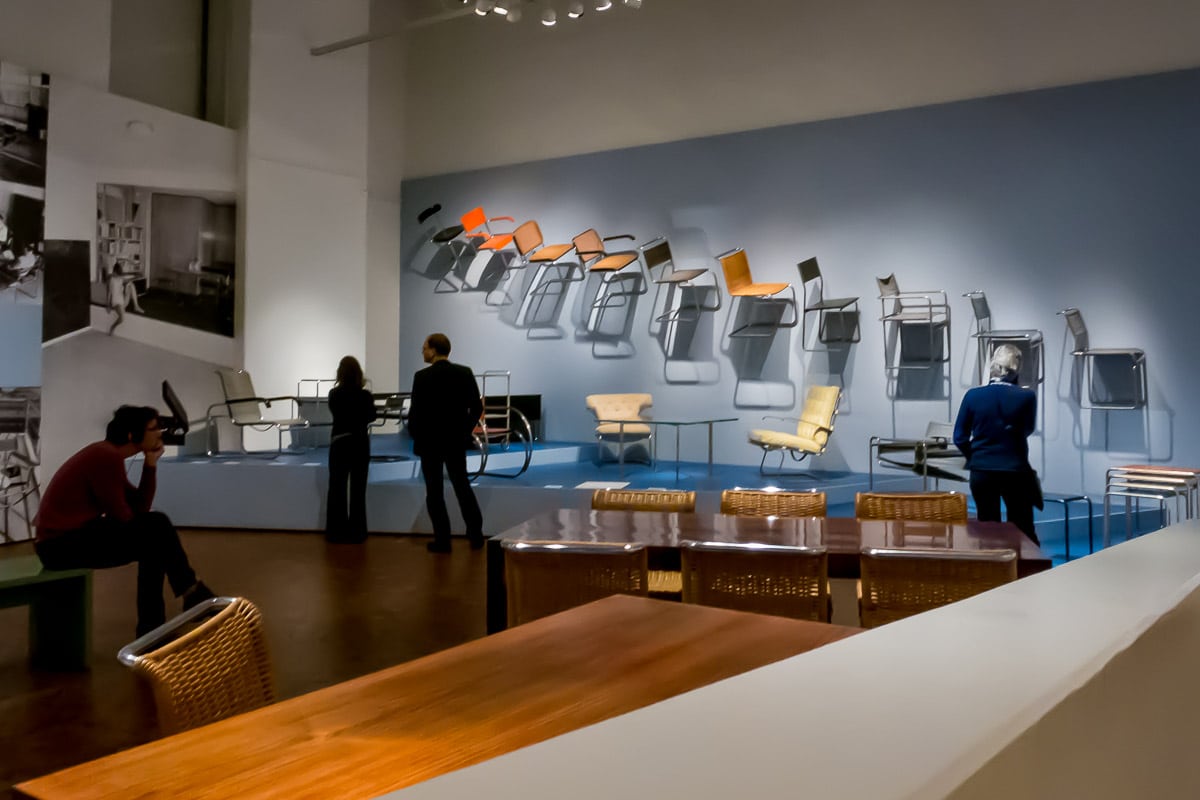
The Bauhaus Archive/Museum of Design
For anyone interested in design and architecture, the Bauhaus Museum is an exhilarating stop. Since our last visit, the building has been closed for major expansion and renovation, expected to be completed in 2022. Meanwhile, temporary exhibit space is open when Covid restrictions aren’t in force, in the Charlottenburg district.
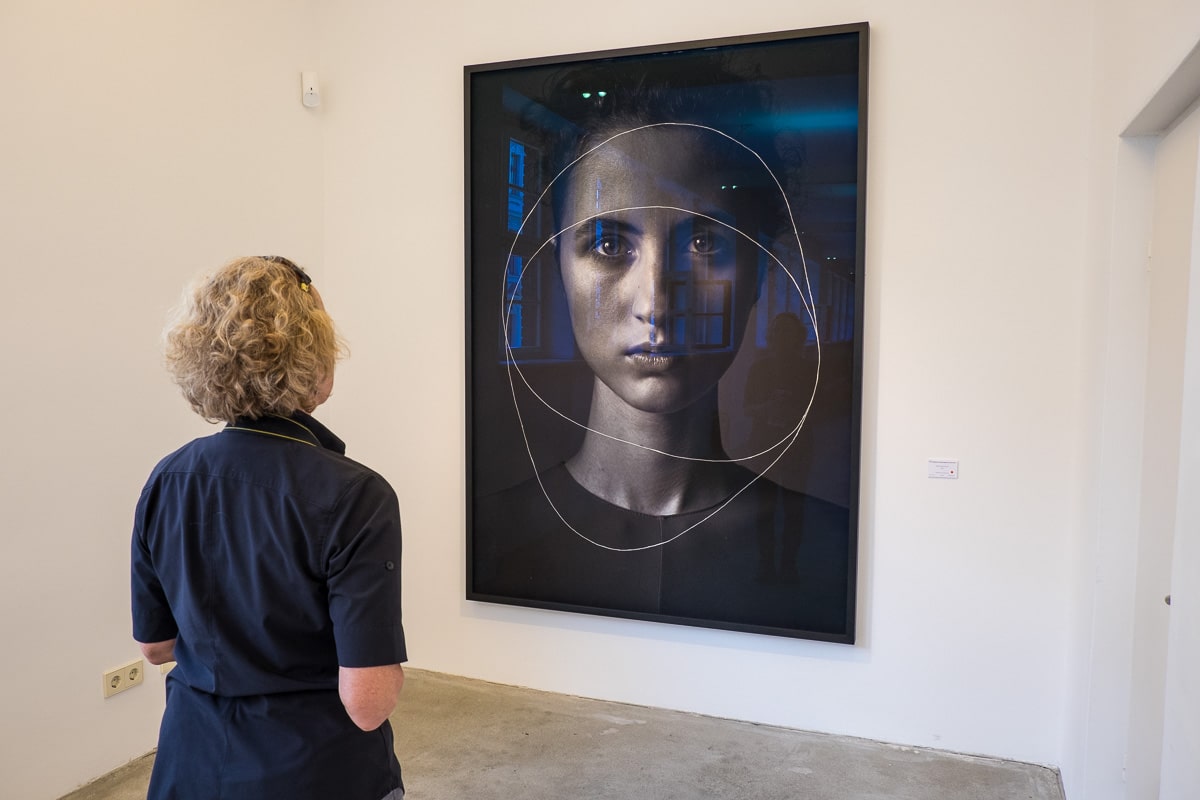
The Berlin Arts Scene
The art world hasn’t been the same since Berlin’s contemporary art scene took off, and Berlin has forever changed in large part because of the artists and arts patrons who have rebuilt chunks of old Berlin. Or, in some cases, the creative class has determinedly resisted renovation, thriving or merely surviving in pockets of the Mitte neighborhood and elsewhere around Berlin. To get the inside story, see our post about a recommended walking tour of Berlin’s art scene with Context Travel.
Museum Island
Berlin has no shortage of museums. If you don’t know where to begin, head to Museum Island in the historic Mitte district and take your pick. Repeat daily and you’ll be busy for a week. The whole collection of buildings–five museums and an event center–is a UNESCO World Heritage Site. Originally built by Prussian rulers through the 19th Century, the museums represent antiquities, sculpture, classic and renaissance art, and national art galleries. The five museums are the Pergamom Museum, the Bode Museum, the Neues (New) Museum, the Old National Gallery, and the Altes Museum. All museums were closed temporarily due to the 2020 pandemic. Visit Berlin’s fine visitor site for up-to-date information.
Mitte Neighborhood
More friendly advice came from the daughter of a friend. Meeting up with our young Australian friends, Claudia and Matt, led us to the Mitte neighborhood, along Torstrasse. Our gadding about with the Aussies included coffee at The Barn at Auguststrasse, a bite to eat at edgy Monsieur Vuong's, and drinks at Claudia’s place of work, the Neue Odessa Bar. The latter, according to some, is ‘the only’ decent bar in the neighborhood, complete with literati, good vinyl music, and a mixologist I’d like to meet.
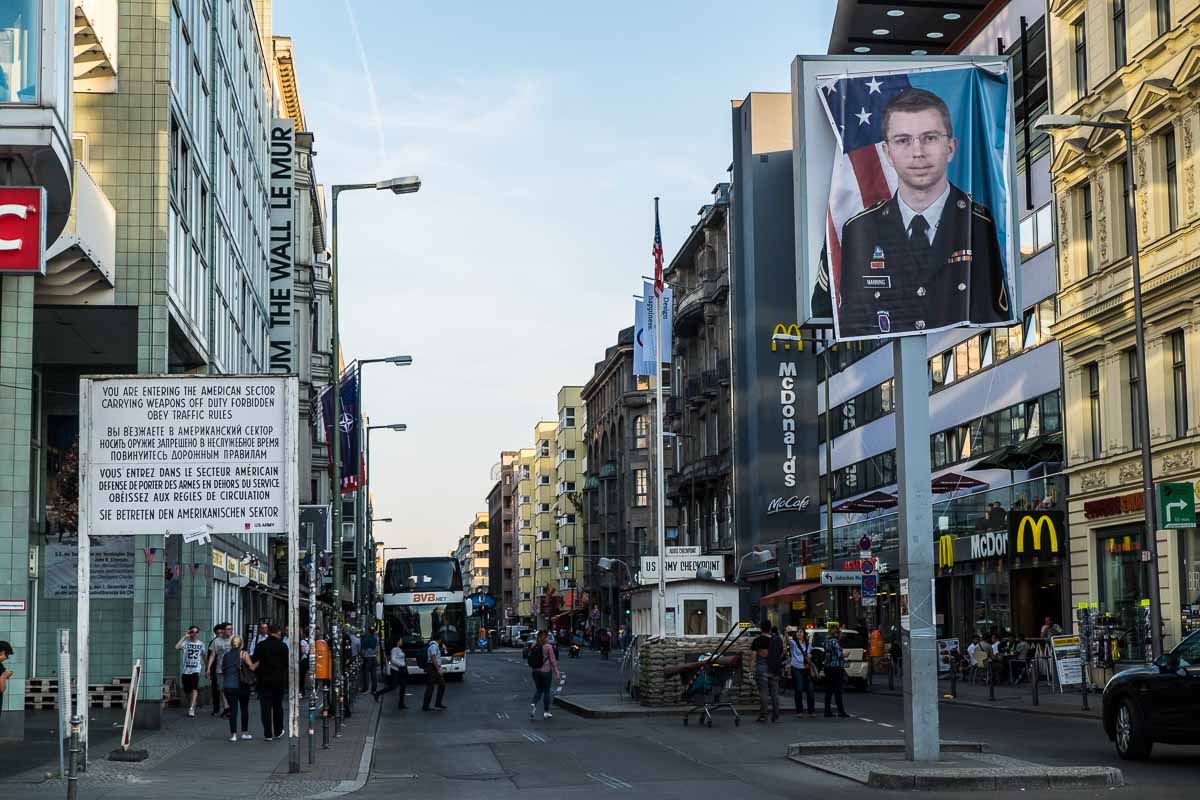
Sightseeing: The Brandenburg Gate, Reichstag, and Checkpoint Charlie
Some of the most photographed spots in Berlin are the Brandenburg Gate, once a focal point of the Berlin Wall, the remarkable Reichtstag building with its glass dome, home of German parliament, and Checkpoint Charlie. We enjoyed glimpses of the Reichstag from the nearby Hauptbahnhof, or central train station, but that could be because Hauptbahnhof is one of the first German words we learned in high school German class, and it's still fun to say.
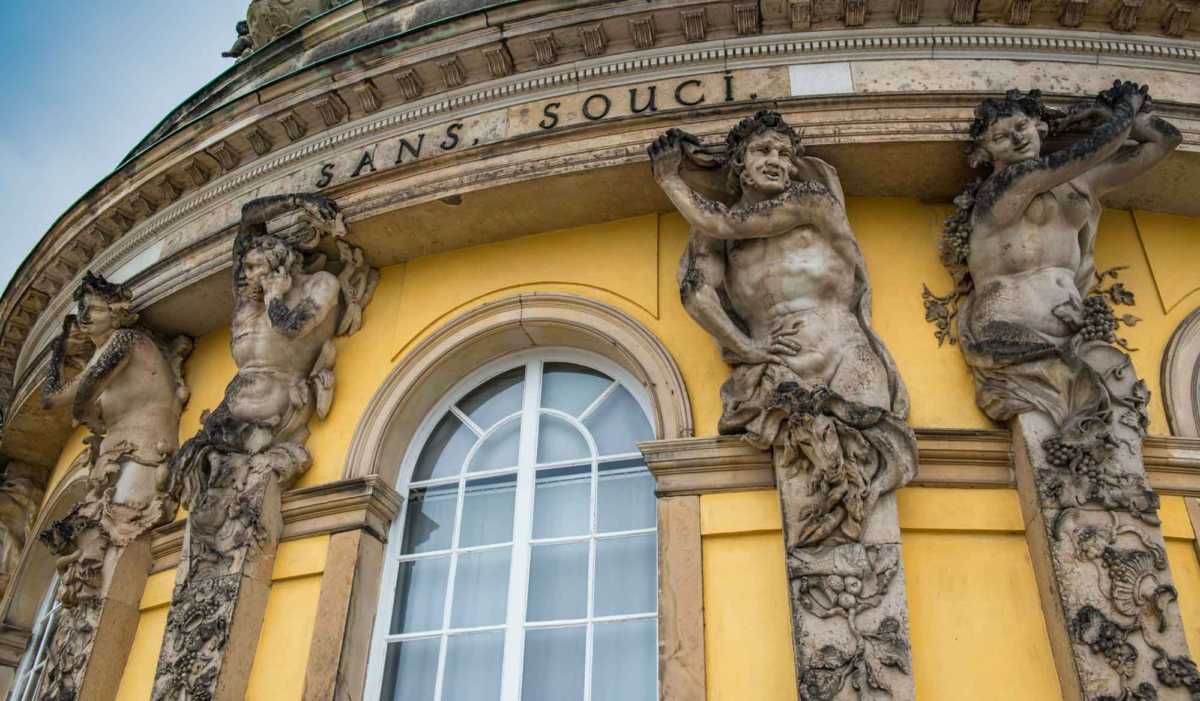
Sans Souci Palace, Potsdam
The Sans Souci Palace in Potsdam, a short day trip from Berlin, is the “getaway” for King Frederick the Great of Prussia. The pressure of being a mid 18th Century ruler was evidently so great that he needed a country palace that sported decoration that could only be termed Bacchanalian.
Sans Souci is French for without care. The name is on the outer wall, right above the grape-draped Caryatids and Atlantids that support the roof on the facade. If you ask me, given the persistent theme of the decoration, the lettering is superfluous.
Because of all the decoration, and the very nice grounds surrounding, the Sans Souci garnered Unesco World Heritage status. Not a bad distinction for a pleasure retreat.
For more on the Sans Souci palace, see this post: The Sans Souci Palace, Potsdam, Germany.
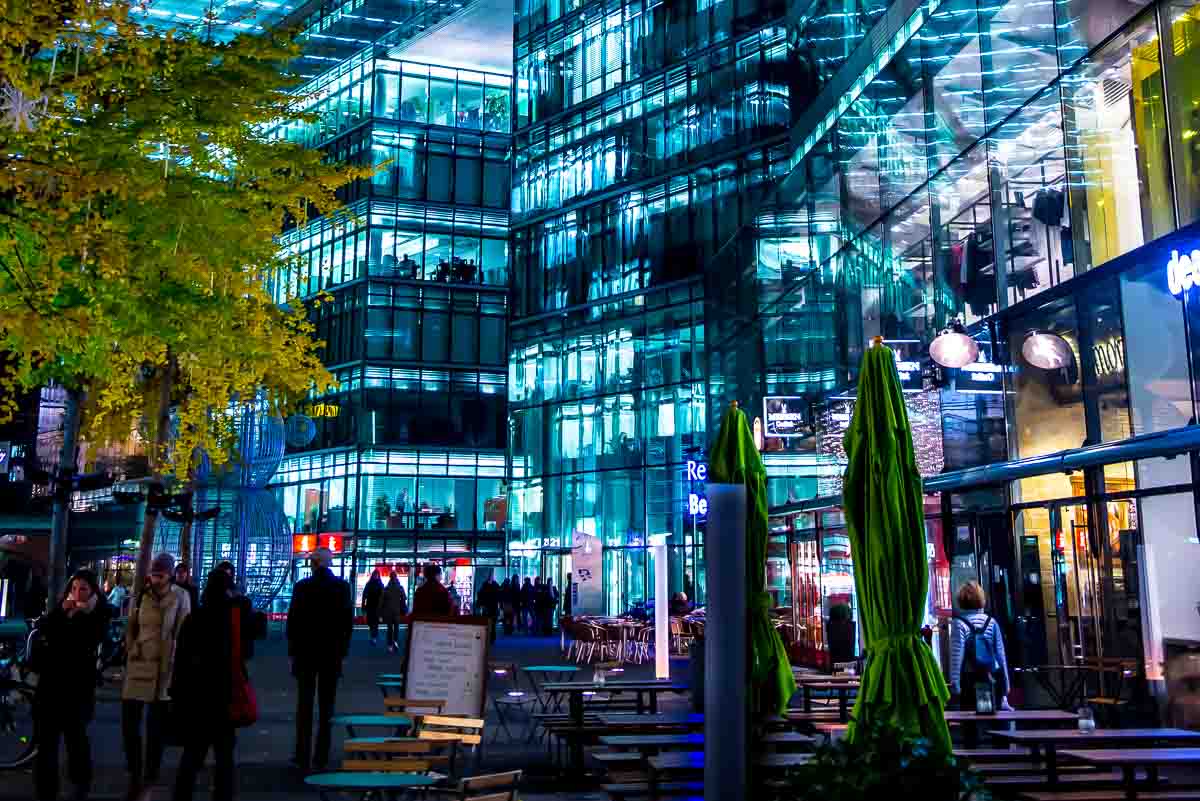
Berlin Hotels and Shopping Kurfürstendamm Strasse
Another way we diverged from standard sightseeing is by staying in two different hotels. First we found Hotel Lützow, a quirky place that seems to have been re-purposed from efficiency apartments. The small but sufficient room for about $70 per night included a small refrigerator and stove top. Dishes could be had for another 25 Euro a week. The walls were thin, but the neighborhood quiet. The Lützow is out of the mainstream tourist areas, but it's easy to hop on the #200 bus to connect with Potsdamer Platz and both sides of the city. And it was in this neighborhood we found our first Berlin dinner at an excellent and reasonably priced Vietnamese restaurant, Lieu in Berlin.
On another visit, we found Hotel Berlin, in the same neighborhood, to be very convenient for wandering all over the city.
Wanting to discover old Berlin, we arranged four nights in the famous Kempinski Hotel, located on the equally famous shopping street, Kurfürstendamm Strasse, or Ku'damm for short. It is the oldest Jewish-owned hotel in the city, founded in 1889 by Berthold Kempinski. The business was originally founded as a wine shop and restaurant, and after World War II, when family returned to re-open the restaurant, they learned the restaurant license was only available with hotel rooms. Lucky for us.
With a pre-arranged media rate to help us stay within budget, we found ourselves at the Kempinski Bristol, the original Kempinski hotel. This same hotel has hosted John F. Kennedy (we were there on the 50th anniversary of his death), Ronald Reagan, Fidel Castro, Margaret Truman, Henry Kissinger, Cary Grant, Bob Dylan, the 1996 Italian World Cup Champion team, and hundreds of other international figures. It’s also highly regarded by businessmen (prepare to pay dearly for fast internet), and by weekend shoppers who want to browse the tony shops on Ku’damm. The hotel’s bar and lobby restaurant are as cozy as can be. The signature Kempinski Grill restaurant is open for dinners. But Reinhard's, open all day, is the place to see and be seen. Grab coffee or a cocktail and sit at the famous outdoor seating area to take in the corner's sights.
For a few years after the Berlin Wall came down in 1989, the top designer stores on Ku’damm street rushed to open flagship stores in the East. But soon they were re-establishing themselves back in this neighborhood, and the Kempinski continued to flourish. It is now a member of Global Hotel Alliance and includes some 75 5-star hotels in Europe, Africa, Asia, and the Middle East. (We’re also big fans of Kempinski Hotel in Budapest.)
We usually use booking.com for all our hotel needs in Berlin.
And one final recommendation, back to those insider tips we received from friends. On our first day in Berlin, we met Andrea, a friend of a friend, for lunch at Habel-Weinkultur restaurant, near the Reichstag and Bundestag area. It was great fun talking to an involved and savvy native German, and hearing her frank opinions on the EU, the Euro, banks, and Germans in general. (“It's not a Euro crisis, it's a banking crisis.”) A former journalist, Andrea now works as a staffer for the human rights committee of the German parliament. The restaurant itself was worthy of a recommendation: a nice, typical spot for business lunches where political figures and journalists might hang out. It was Andrea who suggested a visit to Treptower Park.
Visit Berlin with an open mind, listen to recommendations, and you'll find a world class city that is thoroughly modern even in its historic monuments and memorials.

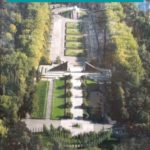
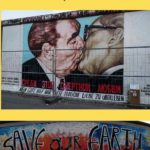
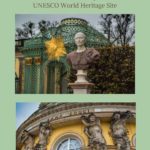
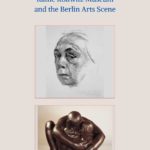

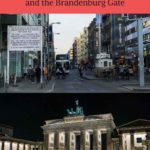
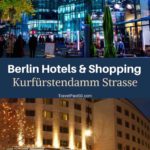

You saw many things we saw and several we didn’t see. This is such a great city, I guess I will have to return and see some of the things we missed
Larry, I feel the same way. We didn’t have time to take in all your suggestions either. But we did walk through the area where you stayed–great location!